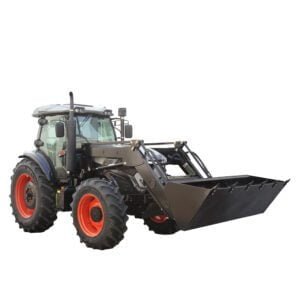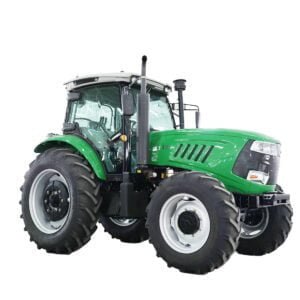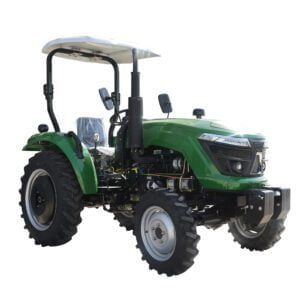E-mail: info@qilumachinery. com Whatsapp: 8618266768780
Máquinas agrícolas de trator: um guia abrangente
Bem-vindo ao meu blog!
Antes de mergulharmos no conteúdo, adoraria que você se juntasse a mim nas minhas plataformas de mídia social, onde compartilho mais insights, interajo com a comunidade e posto atualizações. Veja como você pode se conectar comigo:
Facebook: https://www.facebook.com/profile.php?id=100072217509763
LinkedIn: https://www.linkedin.com/company/74949059/admin/dashboard/
YouTube:https://www.youtube.com/@tractormanufacturer-lc5qz
TikTok: https://www.tiktok.com/@tractormanufacturer
Agora, vamos começar nossa jornada juntos. Espero que você ache o conteúdo aqui perspicaz, envolvente e valioso.
Introdução

Os tratores agrícolas desempenham um papel indispensável na agricultura moderna, aumentando a produtividade, reduzindo a mão de obra e aumentando a eficiência. Com os avanços tecnológicos, as opções e capacidades dos tratores e máquinas associadas evoluíram, proporcionando aos agricultores diversas ferramentas para atender às diversas necessidades agrícolas. Este guia completo abordará tudo o que você precisa saber sobre tratores agrícolas, desde os princípios básicos para escolher o trator certo até recursos avançados, dicas de manutenção e tendências do setor. Seja você um agricultor iniciante ou experiente, este guia oferece insights valiosos para ajudar a otimizar suas operações.
A evolução dos tratores
A história dos tratores é marcada por avanços tecnológicos significativos que transformaram a agricultura.
Energia animal para energia a vapor: Antes do advento dos motores de combustão interna, os agricultores dependiam da força animal para cultivar os campos e realizar outras tarefas agrícolas. O desenvolvimento dos tratores movidos a vapor representou um marco significativo, proporcionando maior potência e eficiência.
A ascensão do motor de combustão interna: O motor de combustão interna revolucionou o design de tratores, resultando em máquinas mais compactas, potentes e versáteis. Os motores a diesel, em particular, tornaram-se a fonte de energia dominante devido à sua eficiência e economia de combustível.
Modernização e Automação: A integração de sistemas hidráulicos, controles eletrônicos e tecnologia GPS transformou tratores em máquinas inteligentes, capazes de executar tarefas com precisão e eficiência. Os tratores modernos podem ser equipados com uma ampla gama de recursos avançados, como direção automática, aplicação de taxa variável e monitoramento remoto.
Tipos de Trator Máquinas Agrícolas
1. Tratores utilitários
Tratores utilitários são máquinas versáteis, adequadas para diversas tarefas, como arar, puxar e carregar. São ideais para fazendas de pequeno e médio porte e geralmente são projetados para trabalhar com diversos acessórios.
2. Tratores de cultivo em linha
Os tratores de cultivo em linha são especialmente projetados para o cultivo em linha, com maior altura livre, fácil manobrabilidade e controle preciso para operações como plantio e cultivo de linhas de cultivo.
3. Tratores de pomar
Os tratores de pomar são tratores compactos que permitem fácil navegação em espaços apertados do pomar, tornando-os ideais para fazendas de frutas onde o espaço é limitado.
4. Tratores compactos
Tratores compactos são menores, mais leves e projetados para paisagismo, roçada e pequenas tarefas agrícolas. São ótimos para agricultores amadores ou pequenas propriedades rurais, onde manobrabilidade e versatilidade são essenciais.
5. Tratores Pesados
Esses tratores são máquinas potentes, projetadas para tarefas intensivas, como aração profunda e levantamento de peso em grandes fazendas. Seus motores oferecem alta potência e torque, tornando-os adequados para ambientes de trabalho exigentes.
Acessórios e implementos para tratores
A versatilidade dos tratores é bastante aumentada pela ampla variedade de acessórios e implementos disponíveis.
- Implementos de cultivo:
- Arados: Usado para revolver o solo e enterrar resíduos de colheitas.
- Grades: Quebre os torrões e nivele o solo.
- Cultivadores: Controle ervas daninhas e areje o solo.
- Grades de disco: Corte e misture os resíduos da colheita no solo.
- Implementos de Plantio e Semeadura:
- Plantadores: Coloque as sementes no solo com precisão.
- Semeadoras: Distribua as sementes uniformemente e na profundidade desejada.
- Distribuidores de fertilizantes: Aplique fertilizantes uniformemente.
- Implementos de colheita:
- Combina: Colha grãos, sementes oleaginosas e leguminosas em uma única passagem.
- Enfardadeiras: Embale feno, palha e outras forragens em fardos.
- Colheitadeiras de forragem: Corte as forragens para silagem ou silagem de feno.
- Implementos para movimentação de materiais:
- Carregadores frontais: Levantar e transportar materiais.
- Retroescavadeiras: Cave valas e escave materiais.
- Implementos de engajamento no solo:
- Cortadores de grama: Corte a grama e outras vegetações.
- Cultivadores: Cultive o solo e controle ervas daninhas.
- Escavadeiras: Cave valas para irrigação ou drenagem.
Análise Comparativa de Máquinas Agrícolas Tratoradas
| Recurso | Tratores de Rodas | Tratores de esteira | Tratores Compactos |
|---|---|---|---|
| Adequação para solo úmido | Baixo | Alto | Moderado |
| Manobrabilidade | Moderado | Baixo | Alto |
| Versatilidade | Alto | Moderado | Alto |
| Custo | Moderado | Alto | Baixo |
| Aplicações | Agricultura Geral | Condições de trabalho pesado/úmidas | Agricultura/Paisagismo em Pequena Escala |
Escolhendo o trator certo para máquinas agrícolas
Selecionar o trator certo requer um profundo conhecimento das necessidades específicas da sua fazenda. Aqui estão alguns fatores a serem considerados:
Opções de orçamento e financiamento
Tratores podem ser um investimento significativo, portanto, escolher um modelo dentro do seu orçamento que ofereça opções de financiamento pode ajudar a gerenciar custos de forma eficaz.
Tamanho da fazenda e tipo de cultivo
Fazendas maiores se beneficiam de tratores de maior potência e maior capacidade, enquanto fazendas menores podem precisar apenas de tratores compactos ou utilitários.
Compatibilidade de anexos e implementos
Tarefas diferentes exigem acessórios diferentes, de cortadores de grama a semeadoras e arados. Certifique-se de que o trator escolhido seja compatível com os acessórios necessários para suas operações.
Potência e capacidade do motor
A potência do trator deve ser compatível com a carga de trabalho. Para tarefas pesadas, alta potência é essencial.
Tratores e Agricultura de Precisão

A agricultura de precisão é um sistema de gestão agrícola que utiliza tecnologia para coletar e analisar dados a fim de otimizar a produção agrícola. Os tratores desempenham um papel crucial na agricultura de precisão por:
Aplicação de taxa variável: Aplicação de insumos como fertilizantes e pesticidas em taxas variadas com base nas condições do solo e da cultura.
Direção automática: Guiando automaticamente o trator ao longo de linhas pré-programadas, reduzindo sobreposições e melhorando a eficiência.
Mapeamento de rendimento: Criação de mapas de produtividade agrícola para identificar áreas que exigem atenção adicional.
Detecção do solo: Usando sensores para monitorar a umidade do solo, níveis de nutrientes e outros fatores para otimizar as aplicações de insumos.
Conclusão
Tratores agrícolas são essenciais para uma agricultura eficiente e sustentável, proporcionando versatilidade, potência e precisão que otimizam os processos agrícolas. Da escolha do tipo e modelo certos à manutenção eficaz, todos os aspectos abordados neste guia visam ajudar os agricultores a tomar decisões informadas que beneficiarão suas fazendas a longo prazo. Seja investindo em um trator pela primeira vez ou atualizando um já existente, compreender esses fundamentos garantirá que você maximize a produtividade, a longevidade e a relação custo-benefício em sua fazenda.
Ao investir em tratores agrícolas de qualidade, você está preparando sua fazenda para o sucesso, otimizando a produção e contribuindo para o futuro da agricultura.
Perguntas frequentes
Qual é o papel dos tratores agrícolas na agricultura moderna?
Os tratores agrícolas desempenham um papel fundamental na agricultura moderna, automatizando tarefas como arar, plantar e colher, permitindo que os agricultores administrem grandes áreas com maior eficiência e menos trabalho manual. Isso ajuda a reduzir o tempo, aumentar a produtividade e, consequentemente, melhorar o rendimento das colheitas.
Como escolher o trator agrícola certo para minha fazenda?
A escolha do trator agrícola certo depende de fatores como tamanho da fazenda, tipo de cultura, acessórios necessários e orçamento. Pequenas propriedades rurais podem se beneficiar de tratores compactos ou utilitários, enquanto operações maiores podem exigir modelos pesados ou especializados com alta potência para tarefas intensivas.
Quais são os requisitos de manutenção para tratores e máquinas agrícolas?
A manutenção de tratores e máquinas agrícolas envolve inspeções regulares, trocas de fluidos e filtros, lubrificação e verificação de peças desgastadas. A manutenção de rotina, de acordo com as instruções do fabricante, garante o desempenho ideal e prolonga a vida útil do maquinário.
Como os tratores agrícolas podem melhorar a eficiência da fazenda?
Tratores agrícolas melhoram a eficiência da fazenda, permitindo que os agricultores cubram áreas maiores em menos tempo e com menos recursos. Recursos avançados, como navegação guiada por GPS, direção automatizada e motores com baixo consumo de combustível, aumentam ainda mais a produtividade e a precisão nas tarefas agrícolas.
Que tipos de tratores e máquinas agrícolas são melhores para tarefas agrícolas específicas?
Diferentes tipos de tratores e máquinas agrícolas são adequados para tarefas específicas: tratores utilitários são versáteis e adequados para tarefas gerais, tratores de cultivo em linha se destacam no plantio em linha, tratores de pomares funcionam bem em espaços apertados e tratores pesados lidam com operações intensivas e de grande escala.
Sobre nós
Shandong Qilu Industrial Co., Ltd. é um fabricante e exportador profissional que integra o desenvolvimento e produção de escavadeiras, carregadeiras e tratores. Nós fornecemos o melhor serviço, absolutamente.
Postagens recentes
Vídeo de demonstração
-1.png)
Fale Conosco Hoje!
Alguma dúvida, orçamento ou consulta? Clique no botão para enviar mensagem.
A Qilu Industrial estará sempre aqui para ajudar.









